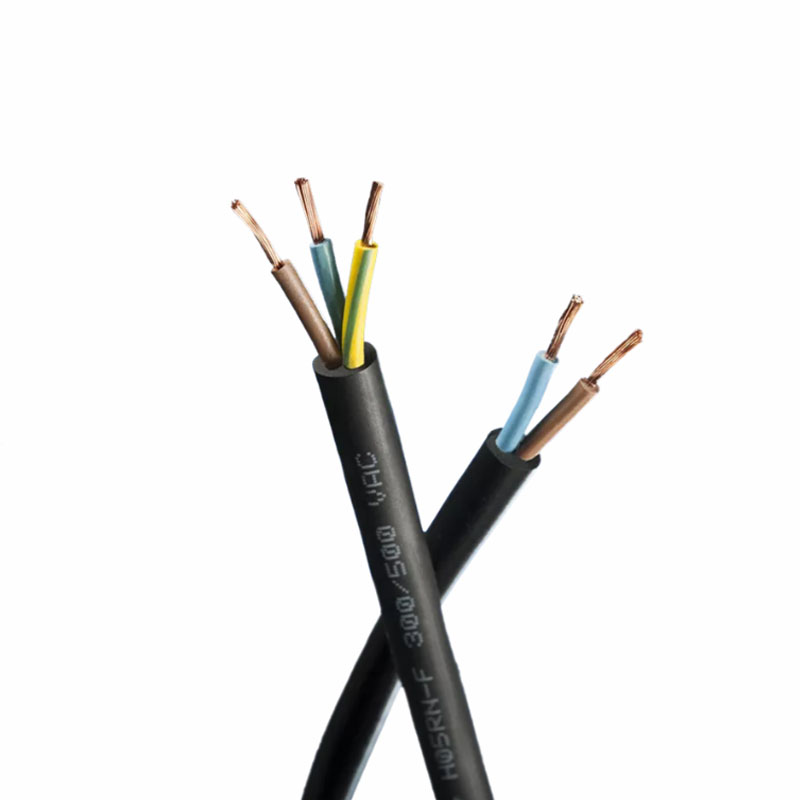
best h03vv f 3x0 75-XLPE MATERIAL IN MEDIUM VOLTAGE CABLE
XLPE MATERIAL IN MEDIUM VOLTAGE CABLE
The trend of cross-linked polyethylene insulated cables in the power cables field is quite prevalent in the world as the substitutes of paper insulated cables, which had played the leading role in the electric power transmission stage. Thus, nowadays after making its impact on its use in the medium voltage cables category, the stage seems to be turning in favor of XLPE cables in the high voltage and extra-high voltage range. Especially in the higher voltage area, the monopoly of paper insulated cables, such as oil-filled cables or gas-filled or compressed types of cables, is gradually collapsing into the co-existence with XLPE cables, which have great advantages and economical reasons such as higher permissible temperature level, ease of jointing and maintenance techniques and omission of equipment inherent to the pressurized cable.
The insulation material for types of XLPE cables is low-density (LD) polyethylene.PE has for a long time had a wide use as cable insulating and sheath materials owing to its excellent electrical and mechanical properties, its lightness, low-temperature flexibility, and good resistance to moisture, chemicals, ozone, etc.
as well as its comparatively low price. Low-Density polyethylene, however, has properties that limit its use as cable insulation. Being a thermoplastic, its softening temperature is 105 - II5°C. Another disadvantage is its tendency to stress cracking when in contact with certain surface-active agents. By means of a process reminiscent of the vulcanization of rubber, PE molecules can be cross-linked, thus greatly improving the thermal and mechanical properties of the material, while its electrical properties are retained largely unchanged. This product, cross-linked polyethylene (XLPE), is therefore no longer a thermoplastic. It assumes elastic, rubber-like consistency, a property that it retains during a further rise in temperature.
The tendency to stress cracking entirely disappears and the material also acquires very good resistance to aging in hot air. PE is made up of long molecular chains. By cross-linked these chains, a network of strong bonds is created and PE is converted into cross-linked polyethylene, XLPE.

PROPERTIES OF XLPE
THERMAL PROPERTIES: Owing to the cross-linking, XLPE is a very heat-resistant material. It cannot melt like polyethylene but decomposes and carbonizes if exposed for long periods to temperatures above 300°C. The permissible conductor temperature during short-circuit for 1 second has therefore been put at 250°C and under continuous load, conductors with XLPE insulation may have a temperature of 90°C. These temperatures are specified by International standards. In emergency conditions and for a limited period, XLPE can withstand l30°C. XLPE, like PE, retains its low-temperature flexibility down to - 40°C, which implies great advantages during the laying of cables.
21/35kV MEDIUM VOLTAGE XLPE INSULATED MULTI-CORE STEEL TAPE ARMOURED CABLE
ELECTRICAL PROPERTIES: The good electrical properties of PE remain largely unchanged during cross-linking process. XLPE therefore, like PE, has a very small and insignificant temperature dependant loss factor (tan d) and dielectric constant (e). As a result, the dielectric loss of XLPE cables is small in comparison with those of PVC and paper insulated cables. XLPE cables are specially adapted for long cable routes and high voltages, in both cases where dielectric losses are of great significance.
MECHANICAL PROPERTIES: Polyethylene has good mechanical properties. It is interesting that at normal temperature PE can resist local stresses better than PVC. In this respect, XLPE has the same advantageous properties as PE and certain grades, such as filled XLPE insulation also resist abrasion much better than polyethylene.
CHEMICAL PROPERTIES: Owing to the cross-linking of molecules XLPE has better resistance than PE to most chemicals such as ordinary acids, bases, and oil.
ENVIRONMENTAL POLLUTION AND CABLES: From the environmental aspect, both PVC and oil-impregnated paper-insulated cables have distinct disadvantages. When PVC cables bum they give off corrosive gases, and a leaking oil-filled cable may cause severe damage to the environment. XLPE admittedly bums, but the products of combustion of carbon dioxide and water do not cause damage. Filled XLPE used for low voltage cables can also be made resistant to flame propagation and the compound does not produce halogen.
-
Reliable LIYCY Cable Solutions for Low and Medium Voltage ApplicationsNewsJul.14,2025
-
Premium Overhead Electrical Wire Solutions for Low and Medium Voltage ApplicationsNewsJul.14,2025
-
Innovative XLPE Electrical Cable Solutions for Modern Low and Medium Voltage NetworksNewsJul.14,2025
-
High-Quality Ethylene Propylene Rubber Cable – Durable EPDM Cable & 1.5 mm 3 Core OptionsNewsJul.14,2025
-
Exploring the Versatility of H1Z2Z2-K 1X4mm2 Cables in Modern ApplicationsNewsJul.14,2025
-
Uses of Construction WiresNewsJul.14,2025
-
Types of Neoprene CableNewsJul.14,2025















